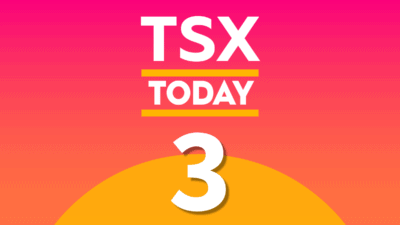Your TFSA (Tax-Free Savings Account) can be transformed into a passive-income stream that can last you a lifetime. Undoubtedly, the market turbulence in the first half of the year has many Canadians hitting the pause button with their retirement accounts. The market is incredibly volatile, with markets suffering north of 2% drops many times over the past few quarters.
The COVID crisis, high inflation, Russia’s invasion of the Ukraine, China’s strict lockdowns, and global supply chain issues are some of the things that have investors unsettled of late. With a looming recession, and Nancy Pelosi’s visit to Taiwan in defiance of Beijing, geopolitical tensions took a sharp uptick on Tuesday.
Undoubtedly, increased tension between China and the United States is the last thing this market needs. Should things sour, the July bonce in markets could easily be clawed back by a jittery Mr. Market. In any case, investors should not pay too much merit to the growing list of issues. Undoubtedly, a mild slowdown (even a recession) seems to have already been baked into the markets. The latest round of earnings results haven’t been great but have been enough to keep markets somewhat stable.
Things look ugly today but could improve
Looking ahead, I expect inflation could plunge sharply, as Federal Reserve rate hikes and tanking commodity prices (oil fell below US$95 per barrel this week) provide a bit of relief to input costs. Further, declining consumer sentiment and a growing glut of inventory could provide enough disinflationary pressure to drag inflation below 4% by year’s end.
It’s been an inflationary hailstorm that has not spared many firms. In any case, investors must continue to stay the course and top up their TFSA passive-income accounts, if they can help it. At the end of the day, all the negatives you hear about today are likely to be less impactful in a few months from now. That’s why it’s never a good idea to delay picking up the firms you deem are too cheap.
H&R REIT: A bargain of a passive-income play
At writing, I’m a big fan of H&R REIT (TSX:HR.UN), one of the cheapest options in the REIT space. After tumbling another 22.5% over the past year, the $3.5 billion diversified real estate play now trades at 2.66 times price-to-earnings (P/E) and 0.7 times price-to-book (P/B), both of which are below the REIT industry averages of 7.8 and 1.0, respectively.
Why such a hefty discount? Higher rates and a deterioration of office demand have weighed heavily on the REIT’s adjusted funds from operations (AFFOs). The REIT slashed its distribution during the worst of the pandemic and proceeded with divestitures after the fact.
There’s no question that H&R desires to transform itself for the better. The REIT sold around $600 million worth of grocery-anchored retail real estate and a whopping $2.3 billion in office properties. Sure, retail and office exposure isn’t viewed too fondly by investors these days. That said, I think H&R could have gotten a bigger bang for its buck had it waited for the dust to settle.
In any case, H&R has a better mix and a much better valuation. The 4.2% yield is pretty average but could be in a position to grow over the coming decade.








